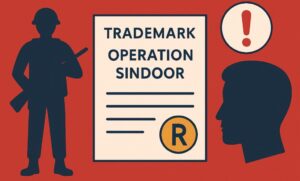It may be both thrilling and unsettling to defend a potentially profitable concept! You can prevent a competitor from creating a product that is legally identical to yours and undoing all your hard work by outlining and proving the unique features of your idea. Make sure the patent’s protection is adequate to prevent internal industry copying of your invention. You must be extremely careful not to submit a patent application for a product that has already been available for sale. You can avoid wasting your money by making an effort to patent already-developed technology by using certain strategies. You may safeguard your idea, by following these five tips:
Table of Contents
Toggle1. Before submitting a patent application, do not publicly disclose your invention
One of the most crucial points to be aware of when looking to patent your concept is that the specifics of your invention cannot have been made publicly available or publicly disclosed prior to the first time you submit a patent application. This is due to the requirement that an invention be novel at the time a patent application is filed in order for it to qualify as patentable. As a result, if you have already disclosed your invention’s specifics to the public, it no longer qualifies as unique and violates one of the key requirements for patentability.
2. Before submitting your patent application, conduct a thorough patent search
An invention must meet the fundamental criteria of novelty and be regarded as innovative at the time your patent application is filed in order to be recognized patentable and hence protectable. Knowing the most relevant inventions that were made before the invention you are claiming as your own will help you decide whether or not these requirements have been met. Therefore, it is advisable to conduct some basic patent research before submitting a patent application in order to ascertain whether the specifics of your invention are previously known or perhaps obvious in light of some prior identical disclosures. The most efficient way to do this is through online searches, both general and through specialized patent databases with public patent specifications. The European Patent Office manages Espacenet, a freely available online patent database, where users can find examples of patent specifications. Preferably, generic searches should be conducted in addition to patent searches, such as online, in trade journals, or elsewhere.
3. Obtain NDAs, confidentiality agreements, and IP agreements that have been signed
You should not publicly release any information about the product or innovation before consulting a patent attorney to protect your concept with a patent. Public disclosure sets off various legal processes through which rights may be irreparably lost.
To prove that you are the true inventor, you should also have written records of each step that went into creating your idea, signed with the help of a witness. If any of your staff are likely to be inventors, you should have them sign contracts in advance specifying that as ideas develop, the company will own the rights to them.
4. Build a prototype
It is necessary to create a prototype for some inventions. You will better understand the invention with the aid of the prototype. Additionally, it will assist with product troubleshooting. The principle behind the invention frequently works brilliantly. After creating the prototype, you can discover that the product doesn’t perform as well as you anticipated. That is advantageous. Your product may be an invention if you included any additional engineering or design to address such flaws.
5. Ensure Good Preparation for Provisional and International Patent Applications
To protect your idea or discovery quickly and without spending a lot of money, you can think about submitting a provisional patent application. As long as you don’t have the financial and material resources necessary to support and submit a non-provisional patent application, a provisional patent protects your rights for a year.
Patent pending refers to inventions or innovations covered by a provisional patent. It suggests that an invention’s rights continue to be protected by the patent infringement statute even if a product does not have a complete patent.
As a condition of exchange agreements, several nations uphold one another’s patents. To completely protect yourself and your rights, you might seek a global patent.
Conclusion
In light of the foregoing explanation, it may be said that if a concept can eventually be transformed into an invention, it may be patentable. An inventor may originally submit a patent application for his or her idea, but he or she must first assess the idea to see if it is currently realizable. The application will be denied and no patent will be issued if the concept cannot be used in general industrial applications and function satisfactorily.





